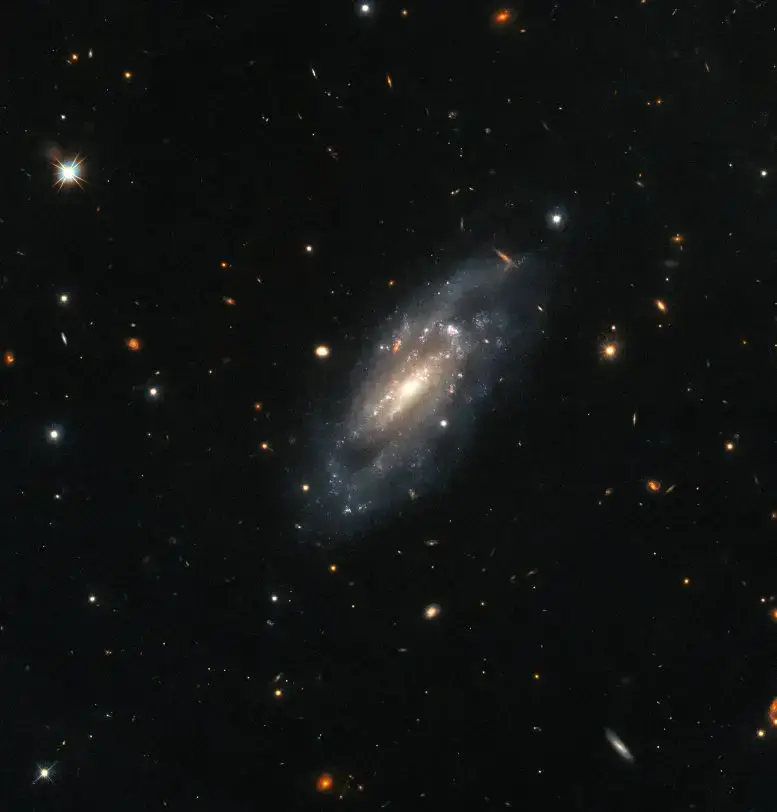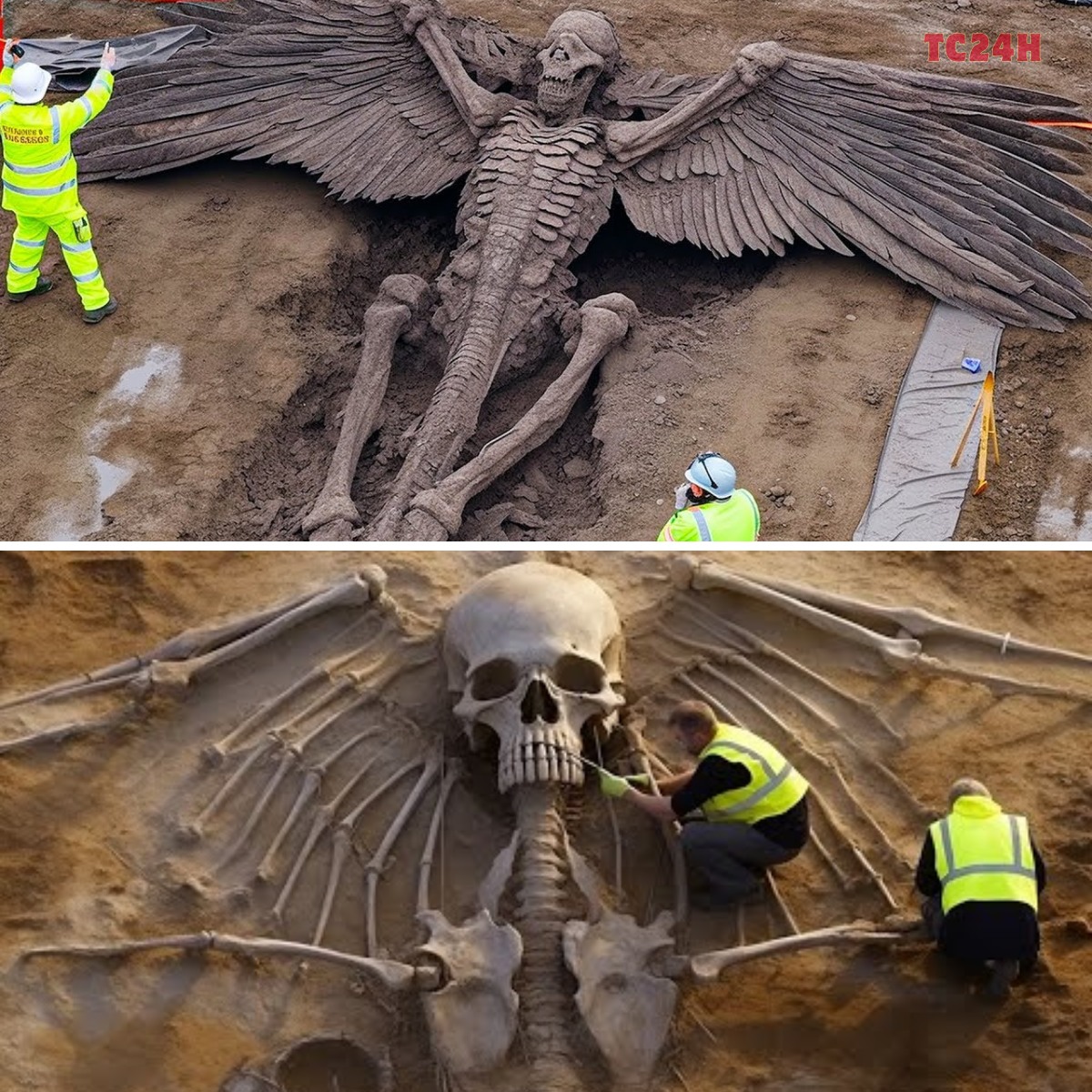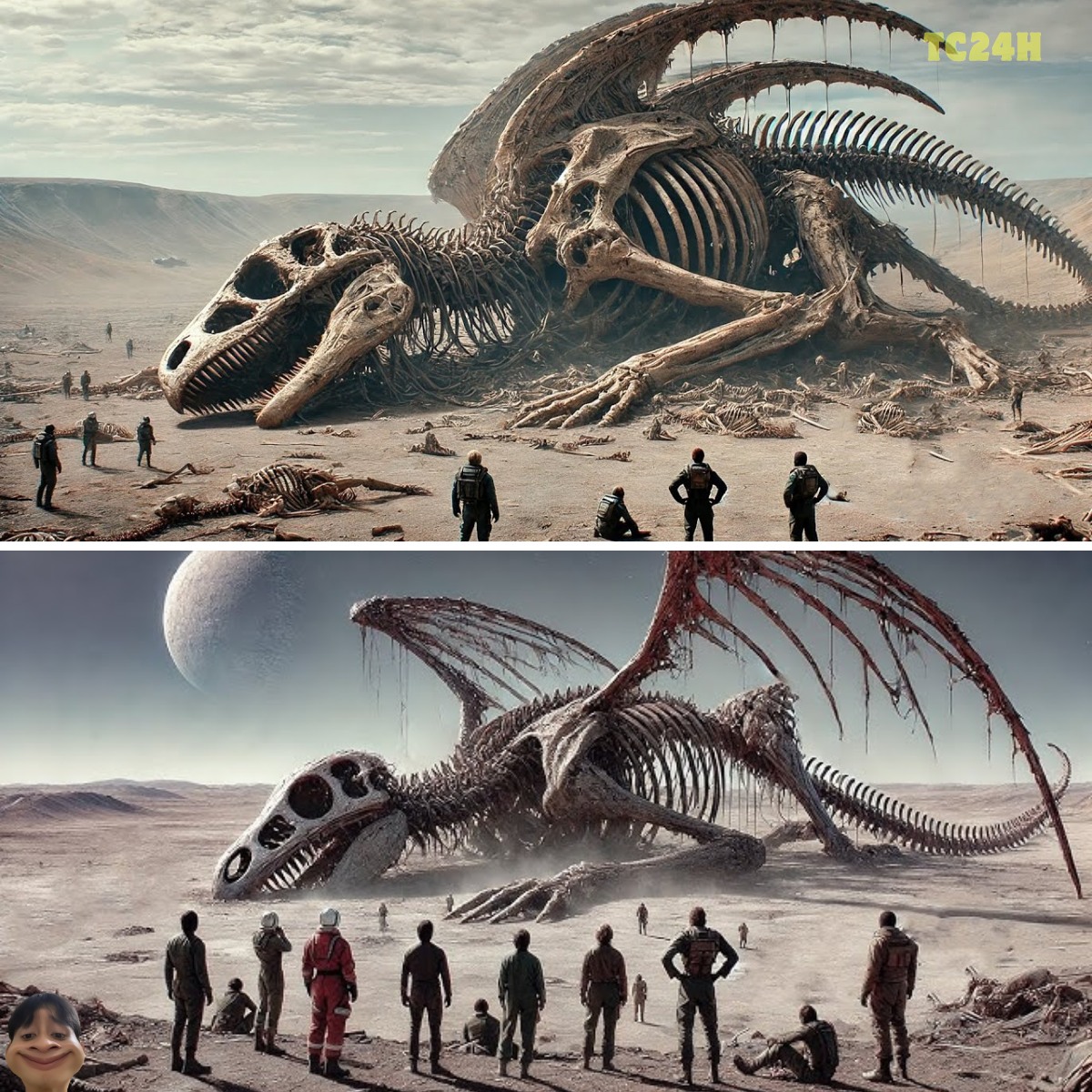Hubble Space Telescope image of the spiral galaxy UGC 11860, approximately 184 million light-years away in the Pegasus constellation, which recently played host to a highly energetic supernova explosion detected by a robotic telescope in 2014. Credit: ESA/Hubble & NASA, A. Filippenko, J. D. Lyman

A supernova explosion detected in the distant spiral galaxy UGC 11860 in 2014 has been studied by two teams of astronomers using the Hubble Telescope, yielding insights into the origins of chemical elements on Earth and the value of robotic telescopes in identifying transient astronomical phenomena.
The spiral galaxy UGC 11860 seems to float serenely against a field of background galaxies in this image from the NASA/ESA Hubble Space Telescope. UGC 11860 lies around 184 million light-years away in the constellation Pegasus, and its untroubled appearance is deceiving; this galaxy recently played host to an almost unimaginably energetic stellar explosion.
A supernova explosion — the catastrophically violent end of a massive star’s life — was detected in UGC 11860 in 2014 by a robotic telescope dedicated to scouring the skies for transient astronomical phenomena — astronomical objects that are only visible for a short period of time. Two different teams of astronomers used Hubble’s Wide Field Camera 3 to search through the aftermath and unpick the lingering remnants of this vast cosmic explosion.
One team explored UGC 11860 to understand more about the progenitor star systems that eventually meet their demise in supernovae. The hugely energetic processes during supernova explosions are predominantly responsible for forging the elements between silicon and nickel on the periodic table. This means that understanding the influence of the masses and compositions of the progenitor star systems is vital to explaining how many of the chemical elements here on Earth originated.
The other group of astronomers used Hubble to follow up supernovae that were detected by robotic telescopes. These automated eyes on the sky function without human intervention, and capture transient events in the night sky. Robotic telescopes allow astronomers to detect everything from unexpected asteroids to rare, unpredictable supernovae, and can identify intriguing objects that can then be investigated in more detail by powerful telescopes such as Hubble.




